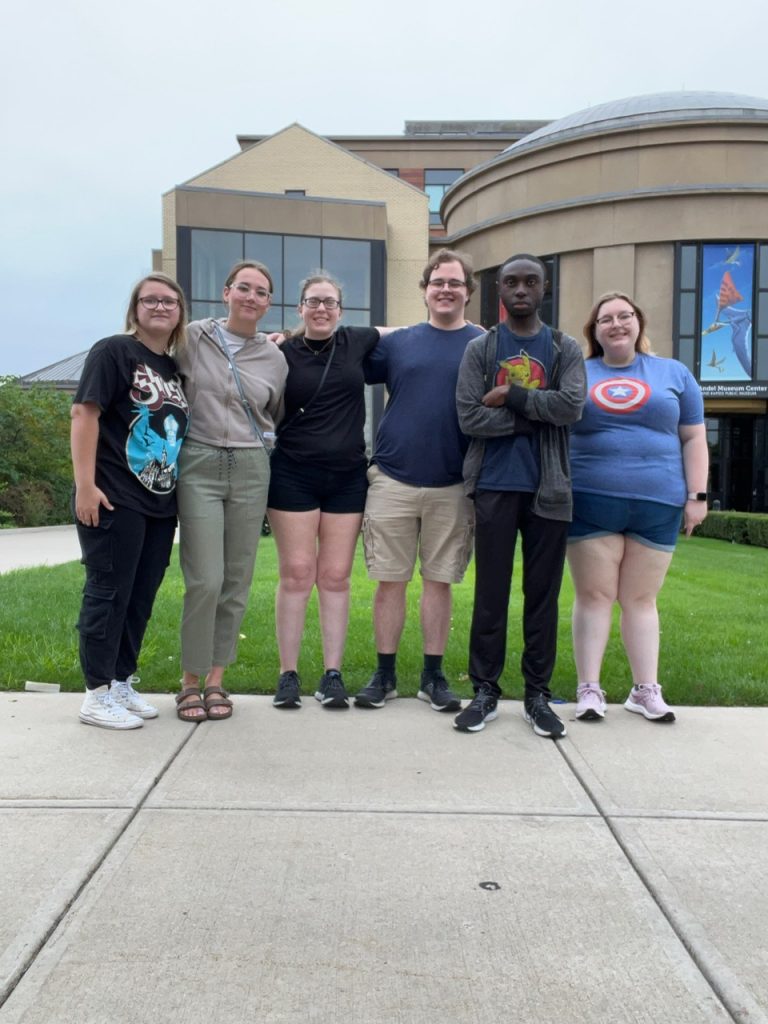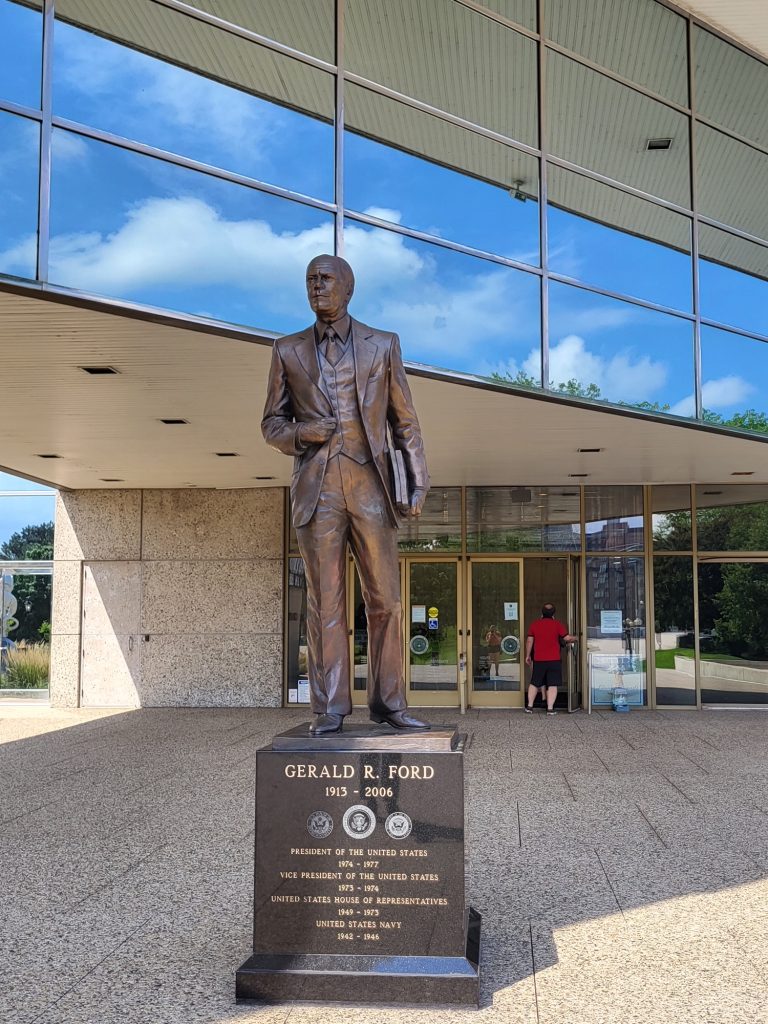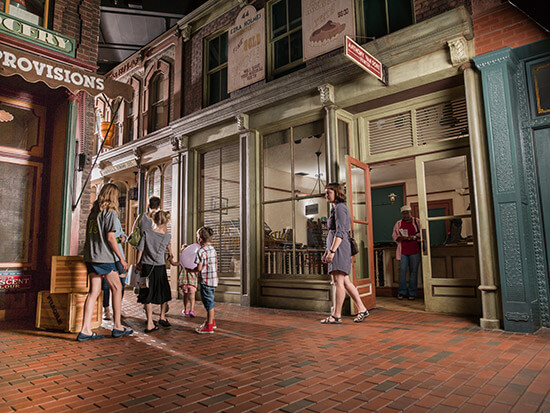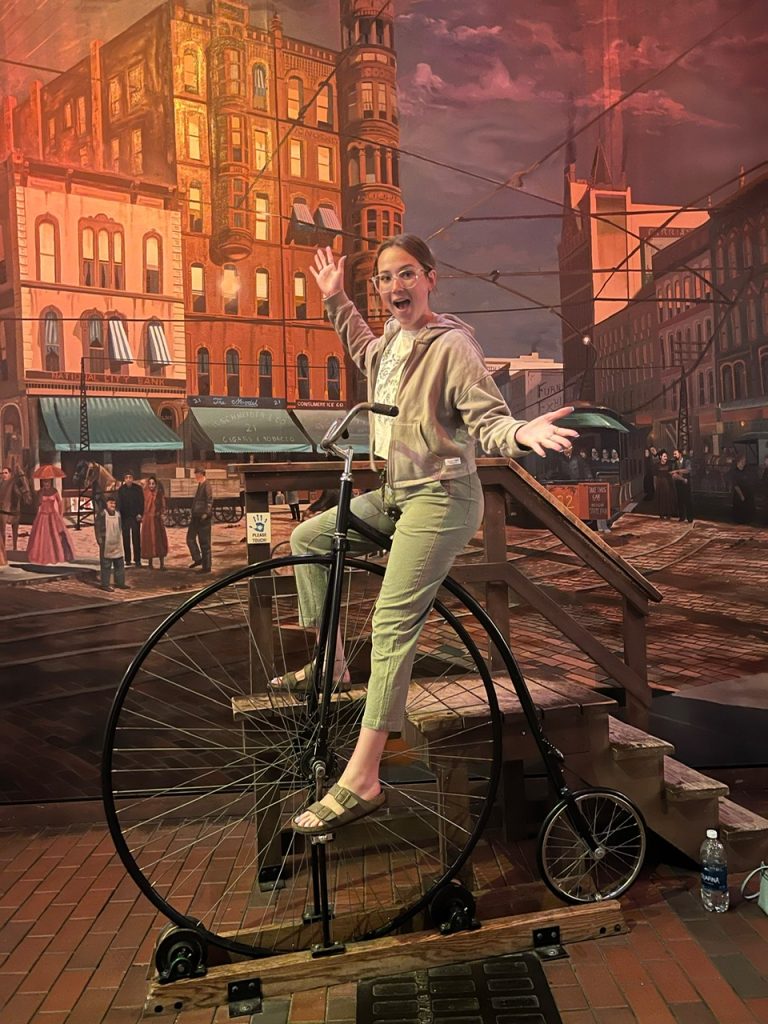By Kasandra Fager, BGSU History MA student, edited by Chloe S. Kozal

Imagine the best museum you have visited, whether that was a Presidential Museum, a battlefield, or an art museum. Did it have interactive exhibits, a planetarium, an easy-to-read narrative, or a family-friendly atmosphere? Well, if nothing comes to mind, consider Grand Rapids, Michigan as your next destination!
Over Labor Day weekend, six BGSU history graduate students traveled to Grand Rapids, Michigan to embark on a 24-hour public history experience. Supported by the department’s student organization, Phi Alpha Theta, and BGSU’s Student Engagement Office, they visited the Gerald Ford Presidential Museum and the Grand Rapids Public History Museum over the weekend. Facing a difficult and complex topic on Saturday and a family-friendly alphabet-themed walk-through of the city’s history proved to be the perfect combination for this semester’s adventure. These two museums were certainly the opposite tone of the other, but they turned out to be the perfect balance between a tried-and-true national narrative and an immersive local history experience.
As a public history trip, students were encouraged to think critically about the museums and to learn how public history is applied in different facilities. We spent hours in each museum remarking on the floor layout, the chosen chronological order of the narrative, the inclusion of race, gender, and class issues, and the accessibility of each facility. Just like public history intends, each conversation encouraged another as the three first-years and the three second-years put their public historian skills to the test!

The Gerald R. Ford Museum was a strong and thought-provoking museum as it told the 38th President’s story. From the outside, the museum was just a stone building with an astronaut and a statue of Ford alluding to what was inside, but nothing would prepare them for the rich content that would be found. The students followed the panels through his childhood, a lawyer, a U.S. Navy sailor, a congressman, Vice President, and President. Having little knowledge of this specific president proved beneficial to the experience because each panel provided something new whether that was Ford’s experience as a boy scout, a book he had authored, or the outfit him and his wife wore to a Presidential ball. Despite the nationalistic tones that are typical of a Presidential Museum, we were excited to learn about and critique how international wars, the Nixon scandal, the economic recession, and two assassination attempts impacted Ford’s decisions and actions throughout his political career. Although the museum’s layout was difficult to follow even with a map, we appreciated how the museum attached historical context and personal stories to the many objects that were on display.
Moving from the Gerald Ford Presidential Museum’s heavy and politicized topics to the family-friendly environment of the Grand Rapids Public History Museum across the street was eye-opening. Our skepticism rose as we began the museum reading about the progressive nature of the car industry and looked up at “Finny” a 1905 finback whale skeleton hanging above the first-floor gallery. As we moved through the lobby, we weren’t sure if the museum would remain this oversimplified, but we were wrong. As we turned the corner, we were immediately thrust into the streets of Old Grand Rapids!


We probably spent a third of our visit exploring the museum’s re-creation of downtown Grand Rapids. We were fascinated how the exhibit designers used a brick road, storefronts, and real objects like medicine bottles, firearms, dinner plates, and a hand pump fire engine, and more to bring the museum’s visitors into the 1890s downtown shopping center. The museum drew us in with their “living history” exhibit and kept us engaged as each alphabetically themed exhibit carried us through the museum. We learned about how the city’s local history was directly impacted by the evolution of money, technology, music, and immigration while still critically engaging with what was happening nationally at the time. With each introduction to the Native American experience, the Latinx celebrations, and the general immigrant observation, the museum showed us how the power of place and belonging shapes local history.
The power of place and the analysis of accessibility shaped our memory of the trip and as historians this experience is invaluable to our education whether we become academic or public historians. Just like the trips we took in elementary school, we were able to actively engage with the history around us and increase our community connections and critical thinking skills. Each panel we studied and each museum we visited brought us one step close to understanding the role public historians play in our communities.
In the end, we may have traveled three hours to learn more about public history, but you can go to a trip to your local history museum and do the same! Go and learn about your hometown or critically or emotionally engage with your local war museum or art exhibit. Each museum or exhibit you visit may just be your new favorite! I know the “Streets of Old Grand Rapids” was ours!
